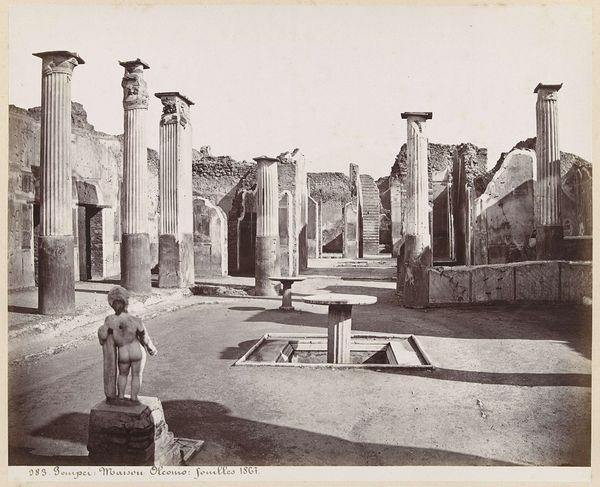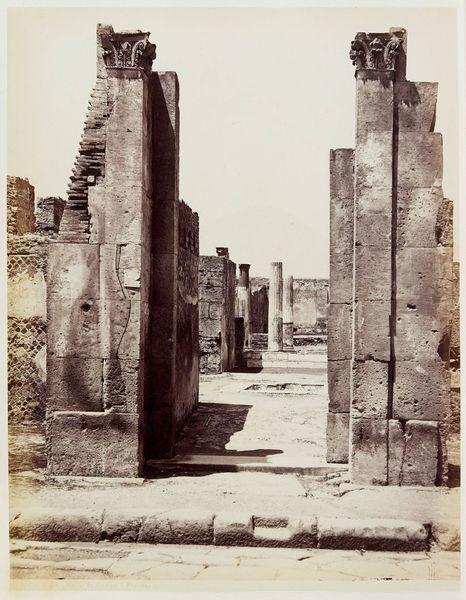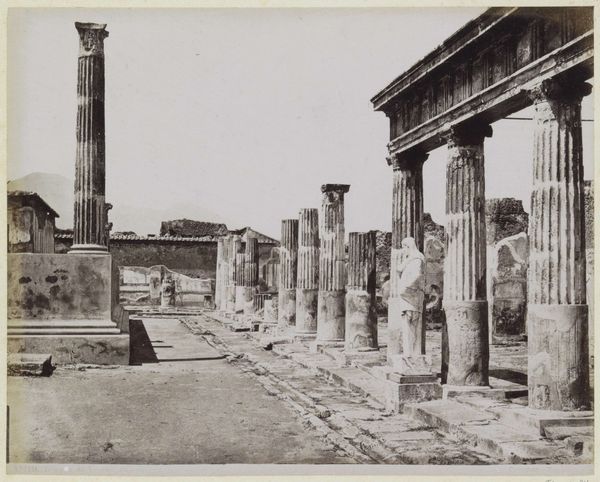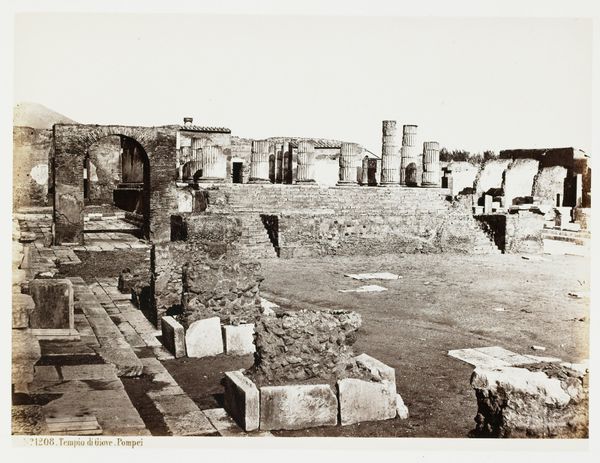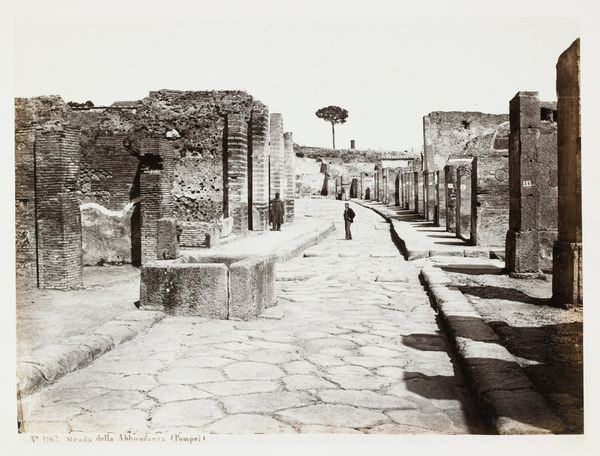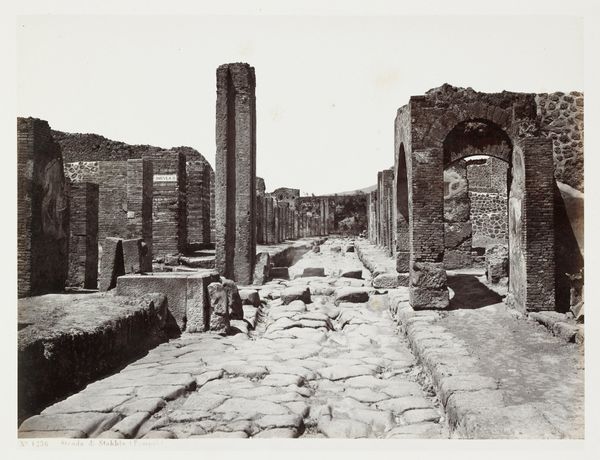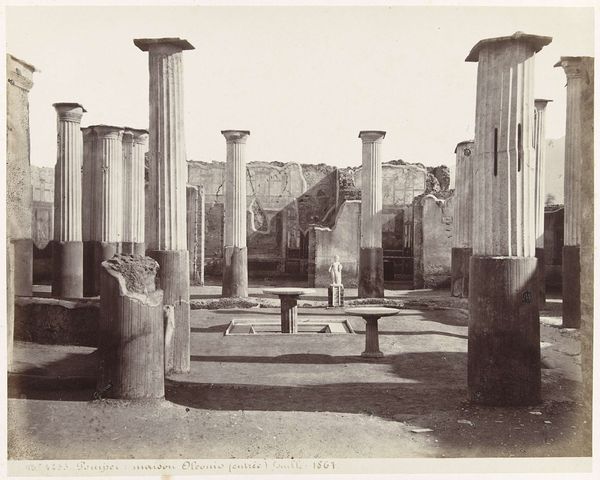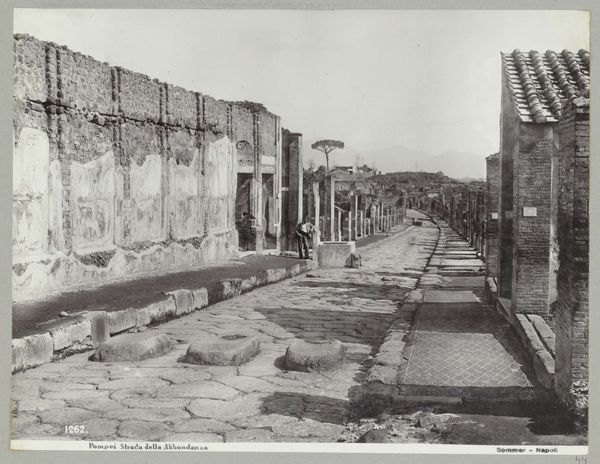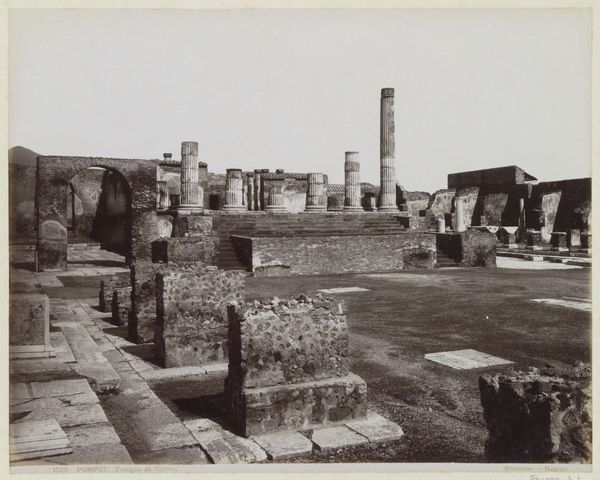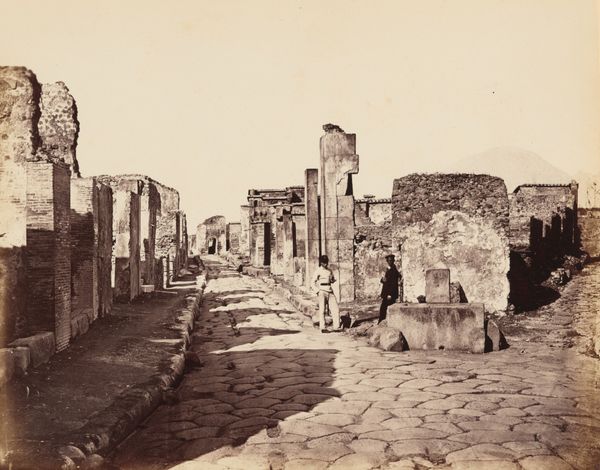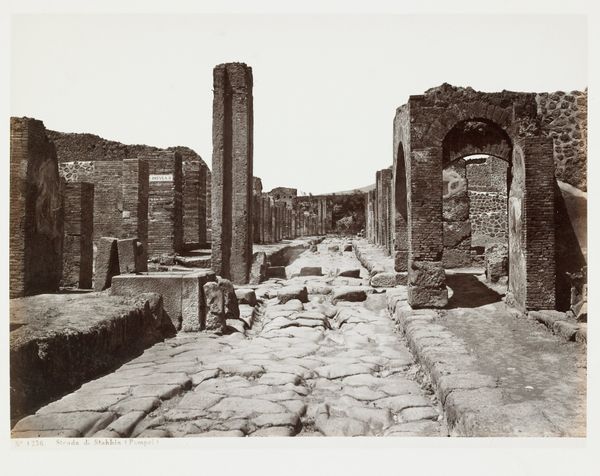
photography, architecture
#
sculpture
#
landscape
#
historic architecture
#
photography
#
geometric
#
ancient-mediterranean
#
cityscape
#
architecture
#
ruin
#
historical building
Copyright: Public domain
Curator: What we're looking at is a photograph entitled "Gladiators' Barracks - Pompeii," captured by Roberto Rive. This striking image depicts the ruins of what was once a place of intense training and preparation for gladiatorial combat. Editor: My first impression is one of stark beauty and melancholic stillness. The sharp shadows cast by the colonnade create an almost rhythmic visual pattern. The scale is impressive; even in ruins, one senses the monumentality of this structure. Curator: The location, Pompeii, is of course central to understanding the weight of this image. Pompeii wasn't simply destroyed, but almost perfectly preserved in its destruction, freezing a specific Roman moment in time. These ruins powerfully remind us of the violence inherent within the culture, of empire, enslavement, and forced spectacle. The gladiators themselves represent a brutal nexus of identity, gender, and class exploitation. Editor: Absolutely. Consider also the symbolism embedded in the architecture. The pillars, even fractured, evoke notions of order, power, and the might of Rome. The photograph invites us to ponder the lives lived, the stories etched into these stones – the sweat, the blood, the dreams of freedom for these gladiators forced to fight in arenas, mere entertainment for a privileged class. Curator: And to further underscore this point: this wasn't merely entertainment. Gladiatorial combat served a critical function of solidifying Roman authority through brutal performances. The Barracks being, literally, the structure holding this operation in place. We must understand that buildings themselves can be deeply ideological structures. Editor: Agreed. Thinking of cultural memory here, those recurring archetypes of strength and conflict connect this distant past to our current obsessions with violent spectacle in films and sports. Perhaps that explains part of our continued fascination. What resonates is the sheer humanness found in what’s left behind, these symbols that echo across millennia. Curator: Examining photographs like Rive's is not merely about understanding the history of ancient Rome; it is equally about confronting our present-day complicity in power structures that rely upon exploitation and the marginalization of specific bodies and identities. Editor: It really makes one consider the enduring impact of the past, doesn’t it? Curator: Indeed. These ruins call on us to understand our position in these repeating stories, and how that unfolds into an ongoing conversation of inequality and resistance.
Comments
No comments
Be the first to comment and join the conversation on the ultimate creative platform.
